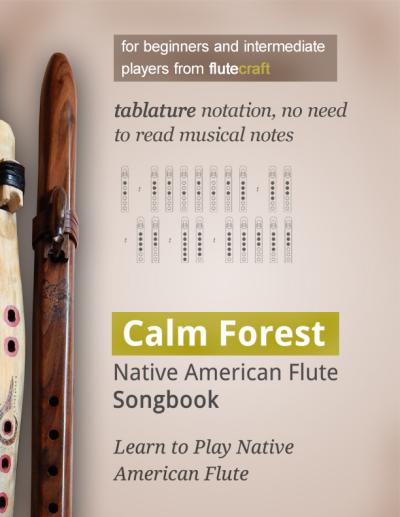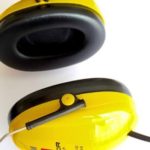Any flute, whether it’s Native American flute, a Bansuri, a Shakuhachi etc, is a type of very personal instrument – you play it with your mouth. Thus, the hygiene of this instrument is very, very important. Each flute is usually played by two people – the maker and the owner. Usually, makers take great care of the hygiene. But some people purchase second-hand flutes, or they sell their first flutes to new owners. Finally, the environment in which the flute is kept takes it toll on flute’s hygiene.
Thus, today I will share some tips and insights into Native American flute hygiene to keep you and other people safe. What’s most important? The awareness that whenever you share your flute with someone, you also share the germs.
Germs are all around us – we cannot get rid of them entirely. But we can limit our exposure to them and the diseases they cause by applying a few “safety” rules. When it comes to Native American flute, most germs we come in contact with expose our hands and mouth, because we both touch the flute, and put it very close to our mouth. There are some germs our immune system can deal with, and some germs our immune system will have trouble with.
Some diseases are very dangerous – HIV, tuberculosis, and sometimes even a more aggresive flu virus can cause great troubles. Can you catch these diseases by playing a Native American flute? How to disinfects a flute? And what hygiene tips should you know as a flute player.
Basically, any disease that is considered to be droplet infection, can be catched through a flute. It depends on few factors:
- Was the previous owner/player of the flute ill?
- What disease was it?
- How long it has been since the previous player played the flute?
To deal with possibility of contracting a disease through a flute, you must learn about some basic rules of hygiene.
Your Own Flute – The Safest Option
The smartest thing to do is to own your very own flute, and share it with no one. In case of Native American Flutes, almost all of them are first used and played by the maker, because tuning a flute requires the maker to play it. Most serious and respectful makers take care of their health and hygiene, so you shouldn’t worry.
Once you get your flute, don’t share it with anyone, unless you wish to share the germs with them, too.
Flute Hygiene for the Maker
In order to tune a Native American flute, the flute maker must play it. Hygiene of the flute begins in the workshop where the flute is made. The flute maker must be aware of different diseases that can be carried through a flute. Also, the maker must be aware if he or she is ill, thus regular health checkups should be mandatory for such flute maker. When the maker takes hygiene serious and doesn’t suffer from any illness, and his work environment is safe, the maker can sell the flutes.
It’s very important to give up flute business (like selling flutes) if you – as a maker – suffer from a disease that can be carried through a flute.
Some of the simpler germs can be killed with alcohol or disinfection substances, but in order to do so, the maker must make sure the alcohol won’t destroy flute’s finish.
The Hygiene of Second-Hand Flutes
If you decide to sell one of your flutes to someone else, you must remember about the rules mentioned above – if you suffer from some kind of dangerous disease that can be carried by a flute, you just cannot sell the flute without exposing the other person to such high risk. If you’re sure you’re healthy, nevertheless you should disinfect the flute with alcohol and few drops of tea tree essential oil. Such essential oil is used to kill of mold and fungus. Both alcohol and essential oil should be applied by a seller and buyer. The essential oil can be literally dropped inside the flute’s chambers.
If you don’t know if your disease can be carried through a flute, ask your doctor about it!
It’s worth to mention that a flute should be stored properly, too. It should be stored in a place moist enough not to harm it’s finish, and dry enough not to cause molds and fungus. Always remember, as a maker, a seller, a workshop organizer, or as owner in general:
- After playing the flute, take off the block from the nest, and allow the flute to dry out.
- Blow out all possible moisture from inside, by covering the true sound hole, and blowing hard into the blow hole a few times.
- Leave the flute outside, like in the room, to dry out – don’t place the flute in closed box or shelf while it’s still wet.
This will lower the risk of mold or fungus growth.
Flute Workshops and Hygiene
Workshops, fairs and stores that sell flute are a different topic. Often, flutes there are used by many people, which isn’t really hygienic. During fairs and in the stores, the flutes are widely available for potential customers to try out. And during workshops, flutes provided by organizers are used during other workshops. In these two cases, disposable plastic straws should be provided. Such straws are put into flute’s blowing hole, allowing the player to play a flute without touching it with his mouth.
Such straws are disposable, and should be properly disposed off after use.
In addition, if you organize such workshops, when you provide flutes for people to play, you should make them with a finish that can withstand alcohol and strong disinfection substances, and disinfect the flutes before and after each workshop. When you sell your flutes during fairs or in physical stores, you should also prepare one flute with stronger finish and disinfect it after each player.
An ecological, healthy natural finish is prefered for personal flutes, of course. But the flutes that are used by multiple people do not require such eco-finish, but a finish that can withstand regular disinfection.
Summary
We should not get paranoid when it comes to germs, but also, we cannot ignore the dangers that come with such personal instrument as Native American flute. It’s not a guitar or piano, there’s always a possibility of infection. That’s why the most important rule remains: your flute is your own, don’t share it.
Photo source: https://www.flickr.com/photos/warrenlynn/6081022030/
Don't forget to become a fan on Facebook and subscribe to new posts via RSS or via email.











 via EMAIL
via EMAIL